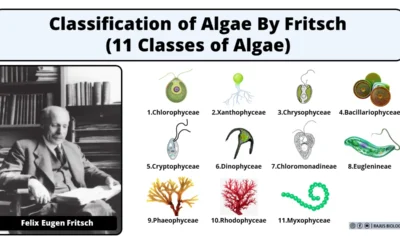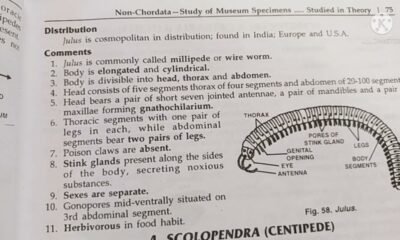News
Brake Cylinders Explained: Key to Your Vehicle’s Stopping Power

Your vehicle’s ability to stop quickly and safely relies heavily on the proper functioning of its brake system. Central to this system are the brake cylinders, including the master cylinder and slave cylinders, which convert the mechanical force from your foot pressing the brake or clutch pedal into hydraulic pressure. This pressure is what ultimately activates the brakes and brings your vehicle to a stop.
Performance and reliability are key for vehicles like the Ford Fiesta Clutch Master Cylinder, which relies on well-maintained brake cylinders to provide smooth and effective stopping power during everyday driving.
How Brake Cylinders Work
Brake cylinders operate as hydraulic pumps that facilitate the transfer of force from the driver to the brake pads or shoes. When you press the brake pedal, the master cylinder pushes brake fluid through brake lines, increasing hydraulic pressure throughout the system. This pressure reaches the slave cylinders at each wheel, which push pistons that press the brake pads against the rotors or the brake shoes against the drums.
Inside the master cylinder are pistons and a fluid reservoir. Depressing the brake pedal causes these pistons to move and force brake fluid into the brake lines. The slave cylinders respond to this pressure by extending pistons to engage the brakes. This hydraulic action amplifies your foot’s force, enabling your vehicle to stop efficiently.
In vehicles like the 2001 Honda Civic Clutch Master Cylinder, the design and maintenance of brake cylinders are crucial for reliable braking performance, especially during emergency stops or heavy traffic.
Why They Matter for Stopping Power
Brake cylinders play a vital role in ensuring your vehicle stops safely and effectively by:
Maintaining Consistent Hydraulic Pressure
Brake cylinders ensure that hydraulic pressure is consistently applied throughout the system. Any loss of pressure from leaks or worn seals can diminish braking power and increase stopping distances, putting you at risk.
Ensuring Balanced Braking
By distributing pressure evenly to all wheels, brake cylinders help your vehicle maintain stability during braking. Uneven pressure can cause your car to pull to one side, especially on slippery or uneven surfaces.
Providing Responsive Pedal Feel
Brake cylinders contribute to the firmness and responsiveness of the brake pedal, allowing you to modulate braking force accurately for smooth stops.
Supporting Safety Features
Many modern vehicles use dual-circuit master cylinders to provide redundancy in the braking system. If one circuit fails, the other can still operate, preventing total brake failure.
Withstanding Heat and Wear
Brake cylinders are designed to resist heat buildup and mechanical wear from frequent braking. For example, the 2013 Subaru Impreza Clutch Master Cylinder must endure a wide range of driving conditions and temperatures while maintaining optimal performance.
Maintenance Tips for Brake Cylinders
To keep brake cylinders performing well and ensure your safety, regular maintenance is essential:
- Check Brake Fluid Levels: Maintain proper fluid levels using the manufacturer-recommended type to prevent contamination.
- Inspect for Leaks: Look for fluid leaks around the master and slave cylinders, brake lines, and connections.
- Replace Worn Components: Timely replacement of worn seals and cylinders prevents hydraulic pressure loss.
- Bleed the Brake System: Remove air bubbles to maintain firm pedal feel and braking responsiveness.
Regular maintenance helps vehicles like the Ford Fiesta, Honda Civic, and Subaru Impreza maintain reliable stopping power over time.
Signs Your Brake Cylinders Need Attention
Watch for these warning signs that may indicate brake cylinder issues:
- A soft or spongy brake pedal that fails to provide firm resistance.
- Increased stopping distances or uneven braking performance.
- Fluid leaks near the brake master cylinder or slave cylinders.
- Brake warning lights illuminating on the dashboard.
Prompt attention to these symptoms helps you avoid dangerous brake failures.
In summary, brake cylinders are fundamental to your vehicle’s stopping power. Whether you’re driving a compact Ford Fiesta, a reliable Honda Civic, or a versatile Subaru Impreza, keeping your brake cylinders in top condition ensures you can stop safely in all driving conditions.

 Blog7 months ago
Blog7 months ago[PPT] Human Reproduction Class 12 Notes
- Blog7 months ago
Contribution of Indian Phycologists (4 Famous Algologist)
- Blog7 months ago
PG TRB Botany Study Material PDF Free Download

 Blog7 months ago
Blog7 months agoCell The Unit of Life Complete Notes | Class 11 & NEET Free Notes

 Blog7 months ago
Blog7 months ago[PPT] The living world Class 11 Notes

 Blog7 months ago
Blog7 months agoClassification of Algae By Fritsch (11 Classes of Algae)

 Blog7 months ago
Blog7 months agoJulus General Characteristics | Free Biology Notes
- Blog7 months ago
Class 12 Biology Notes Chapter wise PPT












